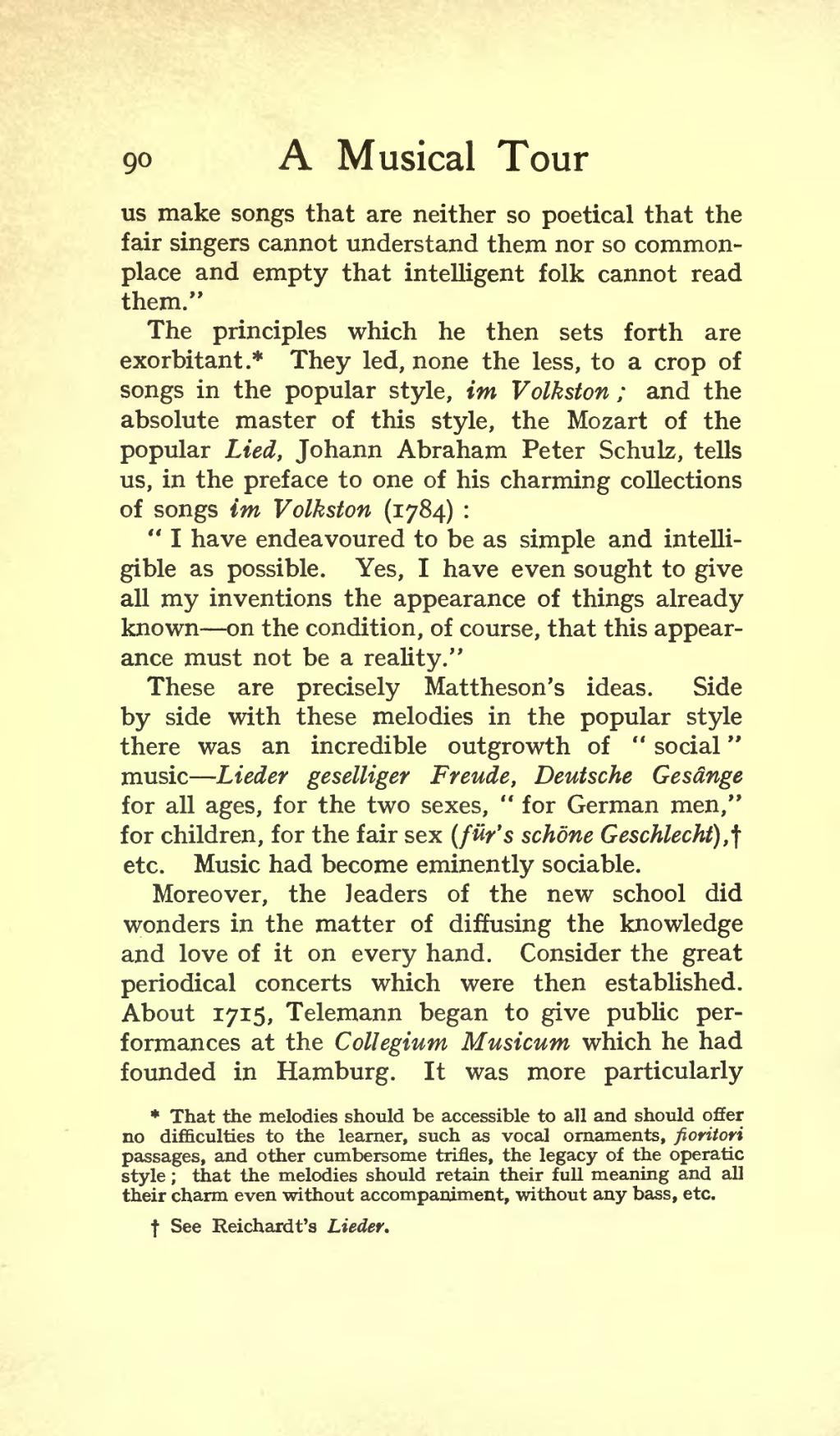us make songs that are neither so poetical that the fair singers cannot understand them nor so commonplace and empty that intelligent folk cannot read them."
The principles which he then sets forth are exorbitant.[1] They led, none the less, to a crop of songs in the popular style, im Volkston; and the absolute master of this style, the Mozart of the popular Lied, Johann Abraham Peter Schulz, tells us, in the preface to one of his charming collections of songs im Volkston (1784):
"I have endeavoured to be as simple and intelligible as possible. Yes, I have even sought to give all my inventions the appearance of things already known—on the condition, of course, that this appearance must not be a reality."
These are precisely Mattheson's ideas. Side by side with these melodies in the popular style there was an incredible outgrowth of "social" music—Lieder geselliger Freude, Deutsche Gesänge for all ages, for the two sexes, "for German men," for children, for the fair sex (für's schöne Geschlecht),[2] etc. Music had become eminently sociable.
Moreover, the leaders of the new school did wonders in the matter of diffusing the knowledge and love of it on every hand. Consider the great periodical concerts which were then established. About 1715, Telemann began to give public performances at the Collegium Musicum which he had founded in Hamburg. It was more particularly
- ↑ That the melodies should be accessible to all and should offer no difficulties to the learner, such as vocal ornaments, fioritori passages, and other cumbersome trifles, the legacy of the operatic style; that the melodies should retain their full meaning and all their charm even without accompaniment, without any bass, etc.
- ↑ See Reichardt's Lieder.
